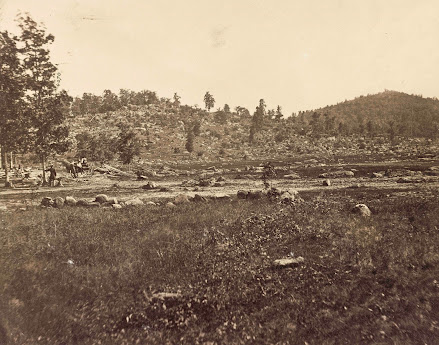Tree cutting this month at Little Round Top will kick off a larger rehabilitation project that will include a 12-18 month closure of the hill where Union forces fought off a furious Confederate assault, Gettysburg National Military Park announced Tuesday.
Park
officials said they are addressing ongoing problems at the overcrowded site. They
cited erosion, overwhelmed parking areas, poor accessibility and related safety
hazards, and degraded vegetation.
Once rehabilitation efforts begin, all of Little Round Top will be closed for 12 to 18 months, the park said. Officials said Wednesday they were unable to provide details on the exact timing of the beginning of the closure, other than "later in Spring 22."
“This project will also enhance the visitor
experience with improved interpretive signage, new accessible trail alignments,
and gathering areas. These improvements will allow visitors to better immerse
themselves into the historic landscape that is essential to understanding the
three-day Battle of Gettysburg,” a news release said.
A park page on the project says the aim is to “reestablish, preserve, and protect the features that make up this segment of the battlefield landscape.”
 |
| Little Round Top seen from Plum Run Valley (Library of Congress) |
Little Round Top is the location of some of the most famous fighting of the battle
Rising 164 feet above the Plum Run Valley to the west, the boulder-strewn hill became the anchor of the Union’s left flank and a focal point of Confederate attacks on the afternoon of July 2, 1863. The 4th,15th and 47th Alabama regiments made a series of legendary assaults against the 20th Maine, led by Col. Joshua Chamberlain (right).
“The (Maine) regiment’s sudden, desperate bayonet charge blunted the Confederate assault on Little Round Top and has been credited with saving Major General George Gordon Meade’s Army of the Potomac, winning the Battle of Gettysburg and setting the South on a long, irreversible path to defeat,” according to the American BattlefieldTrust.

No comments:
Post a Comment